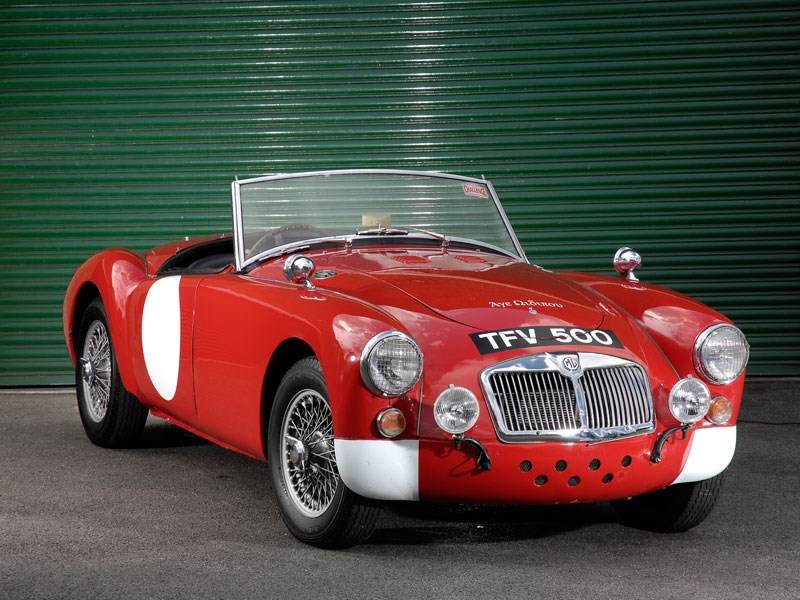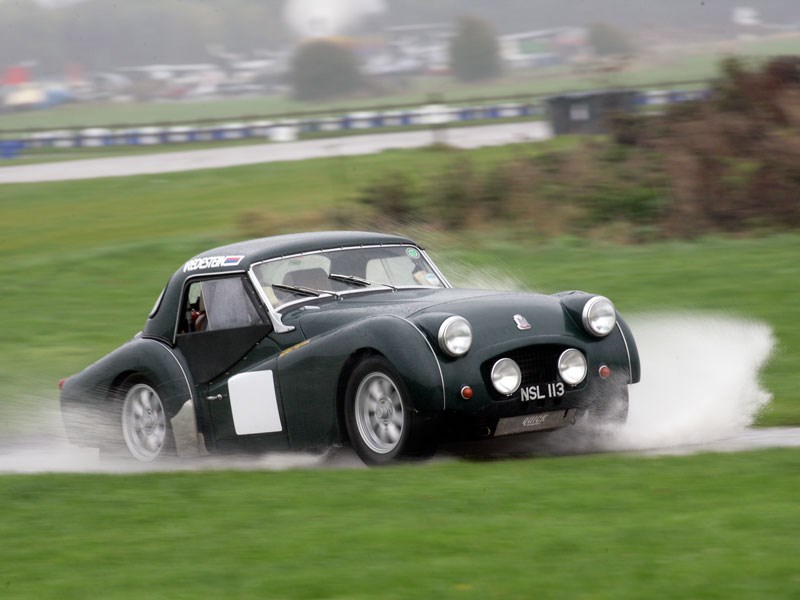It’s a sports car debate dating back nearly sixty years - which is better, the MGA or the Triumph TR3?
Many view the late 1950s as the golden era for British sportscars. Roads were empty upon leaving cities and towns and motorways had yet to appear in all their monotonous glory. This left twisting country roads and unpredictability the order of the day. Naturally, back then buying British was not only the patriotic thing to do - it was common sense. Unless funds were unlimited, affordable was the only option - and we Brits did the affordable sportscar better than anyone else.
Two of the best loved and most cost effective were the MGA and the Triumph TR3. So, donning the tweed cap, scarf and suddenly developing the urge to smoke a pipe when in transit, which of these 1950s beauties is the spiffing gentleman’s best friend?
The Looks
Both the TR3 and the MGA look strikingly similar, yet wholly different. Offering smooth curves and perky front ends, each has their unique charm. Together, these cars could be brothers - but upon closer inspection they are different enough to set themselves apart.
The MGA is still viewed as the prettiest MG ever to grace the tarmac, with the full-length profile perfect in every aspect, there aren’t even door handles to spoil the proportions. When styling isn’t toyed with over a long production run, you know the designers got it right.
The designers got a lot right with the TR3, too. With an oddly elegant rough-and-ready air around Triumph’s 1950s stalwart, the Walter Belgrove-penned lines are simpler and hark back to an earlier period of British automotive greatness. The end result of the swooping arches and projecting headlamps is a warm-blooded sports car look, perfected by the wire wheels.
The Power
B-Series engines can feel unsporting with the MGA, while fragile Twin Cams can often prove to be tricky customers, but that doesn’t stop them proving their worth. By the time MG tweaked the A into a road-going rocket, a top speed of 115 mph was achievable thanks to 108bhp – also propelling the car and driver from naught to 60mph in 9 seconds. Early MKIs seem lethargic by today’s standard, offering a lowly 72bhp. Even early ones could just about crack 100mph, with a standstill to 60mph dash in 15 seconds. It might sound lacklustre, but back in 1961 very few cars could outrun the little MGA. It’s why Cathy Gale had one during her TV stint on The Avengers.
The Triumph holds even humbler origins than the MG, with engine underpinnings that date back to the mid 1940s - the original power unit propelling a tractor. Thanks to proven indestructibility on the farmyard, the engine was slightly downsized and fitted with twin carburettors. Peak power could be found low down in the rev range, the TR3 beating the MGA to 60mph by nearly three seconds and top out at 4mph faster. This allows the ever-eager Triumph to still cut it in modern traffic.
The Handling
Long, winding country roads were firmly in mind when tailoring both these open-top beauties, and this is exactly where they feel most at home. Both being so narrow, the handling is light and bouncy but ultimately good fun. Technology has pushed on dramatically since these cars were launched, but it doesn’t take long to customise yourself to the characteristics of each. The Triumph suffers slightly with a tendency to slide about on uneven surfaces, but confidence is quickly gained to counteract any lairiness from the live rear axle.
The MGA is also huge fun to play about with but is slightly different in its approach. The steering is direct and the front end will always point where you want it to go, but take a corner too broadly and you could be in trouble. Thanks to the MG’s set up and balance, this can be offset with balancing the throttle - leaving you with a huge grin into the bargain.
The TR3 grieves from a fair amount of scuttle shake, but it’s to be expected, as its design is older than most houses. The MGA suffers less from this, and therefore is the choice for any long distance journey from the two.
Living with them
If you were feeling brave, you could use either the Triumph TR3 or the MGA as an everyday vehicle. They aren’t going to be the most economical and chances are you may very well face the elements more than you would care to, but parts and advice are easy to source. Clubs exist for both cars and will take you under their wing to ensure you and your cars are taken care of.
They won’t be overly thirsty on the old petrol either, averaging between 25 and 28 mpg - so long as you add lead additive when required. For this round it’s almost stalemate - with similar boot space and mechanical simplicity - but the MGA pips the battle for comfort with a cabin more accommodating to longer journeys. The TR3 is unlikely to leave you sore in the back department but it may well grind you down on less than smooth tarmac.
Verdict.
An overall tough choice to make, although there are huge differences between them, it’s almost impossible not to fall head-over-heels for both. As far as looks go, the MGA takes the trophy - but taking power into account the TR3 looks to steal the limelight in true style.
However, the MGA is far better for trips of any length and handles in a manner more composed to suit the gentleman behind the wheel. As far as spirit is concerned, however, the Triumph feels enlivened with extra dollops of soul.
In reality, each cancels the other out. But for the purposes of picking the CCFS preferred vehicle - we would have to determine that the MGA makes more sense. Yet, when have classic cars ever been about sense?

